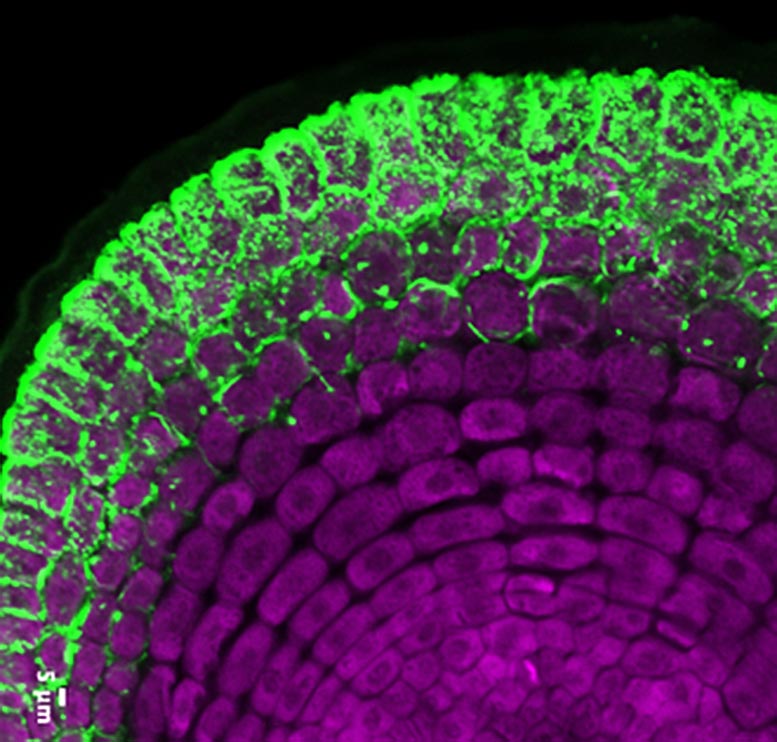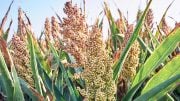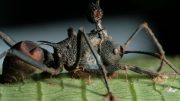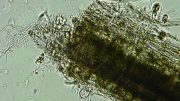
The ectomycorrhizal fungus Laccaria bicolor, shown in green, envelops the roots of a transgenic switchgrass plant. Switchgrass is not known to interact with this type of fungi naturally; the added PtLecRLK1 gene tells the plant to engage the fungus. Credit: ORNL, U.S. Dept. of Energy
An Oak Ridge National Laboratory team has successfully introduced a poplar gene into switchgrass, an important biofuel source, that allows switchgrass to interact with a beneficial fungus, ultimately boosting the grass’ growth and viability in changing environments.
Scientists observed the ectomycorrhizal fungus Laccaria bicolor as it enveloped the plant’s roots. This behavior, not known to occur naturally between these fungi and switchgrass, helps the plant to efficiently take up nutrients and water. This symbiotic relationship results in switchgrass that is more disease- and drought-resistant.
“We’ve engineered switchgrass to grow where it would typically struggle, that is, marginal land that is unsuitable for food crops,” said ORNL’s Jay Chen. “The fungus allows the switchgrass to absorb minerals from the soil.”
In a previous study, the team identified the receptor gene that looks out for friendly fungi. Next, the team will validate the laboratory findings with a field study.
Reference: “Towards engineering ectomycorrhization into switchgrass bioenergy crops via a lectin receptor-like kinase” by Zhenzhen Qiao, Timothy B. Yates, Him K. Shrestha, Nancy L. Engle, Amy Flanagan, Jennifer L. Morrell-Falvey, Yali Sun, Timothy J. Tschaplinski, Paul E. Abraham, Jessy Labbé, Zeng-Yu Wang, Robert L. Hettich, Gerald A. Tuskan, Wellington Muchero and Jin-Gui Chen, 17 July 2021, Plant Biotechnology Journal.
DOI: 10.1111/pbi.13671









Be the first to comment on "Bioenergy: Friendly Fungi Boost Growth for Biofuel Source"